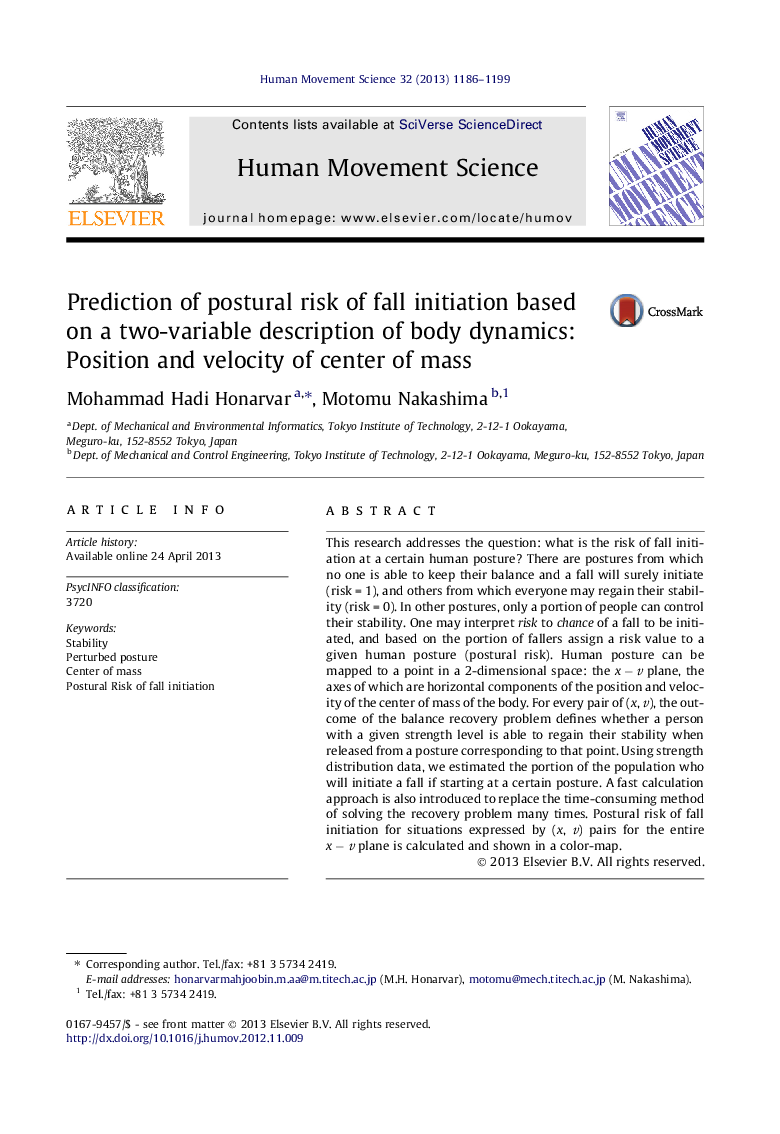| Article ID | Journal | Published Year | Pages | File Type |
|---|---|---|---|---|
| 928365 | Human Movement Science | 2013 | 14 Pages |
This research addresses the question: what is the risk of fall initiation at a certain human posture? There are postures from which no one is able to keep their balance and a fall will surely initiate (risk = 1), and others from which everyone may regain their stability (risk = 0). In other postures, only a portion of people can control their stability. One may interpret risk to chance of a fall to be initiated, and based on the portion of fallers assign a risk value to a given human posture (postural risk). Human posture can be mapped to a point in a 2-dimensional space: the x − v plane, the axes of which are horizontal components of the position and velocity of the center of mass of the body. For every pair of (x, v), the outcome of the balance recovery problem defines whether a person with a given strength level is able to regain their stability when released from a posture corresponding to that point. Using strength distribution data, we estimated the portion of the population who will initiate a fall if starting at a certain posture. A fast calculation approach is also introduced to replace the time-consuming method of solving the recovery problem many times. Postural risk of fall initiation for situations expressed by (x, v) pairs for the entire x − v plane is calculated and shown in a color-map.
